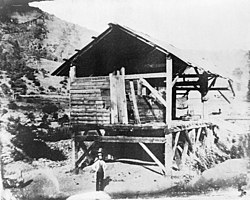State
(class) | Vacated by | Reason for change | Successor | Date of successor's
formal installation [a] |
|---|
Tennessee
(2) | Vacant | Failure to elect.
Successor elected November 22, 1847. | John Bell (W) | Elected November 22, 1847. |
Iowa
(2) | Vacant | Iowa had been admitted to the Union December 28, 1846, but the legislature failed to elect due to a three-way split that prevented any candidate from earning the required number of 30 legislators' votes. [1]
First Senator elected December 7, 1848. | George Wallace Jones (D) | Elected December 7, 1848. |
Iowa
(3) | Vacant | Iowa had been admitted to the Union December 28, 1846, but the legislature failed to elect due to a three-way split that prevented any candidate from earning the required number of 30 legislators' votes. [1]
First Senator elected December 7, 1848. | Augustus C. Dodge (D) | Elected December 7, 1848. |
Mississippi
(1) | Jesse Speight (D) | Incumbent died May 1, 1847.
Successor appointed August 10, 1847, and then elected January 1848. | Jefferson Davis (D) | Appointed December 5, 1847. |
Connecticut
(1) | Jabez W. Huntington (W) | Incumbent died November 1, 1847.
Successor appointed November 11, 1847, and then elected May 1848. | Roger S. Baldwin (W) | Appointed December 5, 1847. |
Maine
(1) | John Fairfield (D) | Incumbent died December 24, 1847.
Successor appointed January 5, 1848. | Wyman B. S. Moor (D) | Appointed January 5, 1848. |
Georgia
(3) | Walter T. Colquitt (D) | Incumbent resigned February 4, 1848.
Successor appointed February 4, 1848, to finish the term. | Herschel V. Johnson (D) | Appointed February 4, 1848. |
Arkansas
(3) | Ambrose H. Sevier (D) | Incumbent resigned March 15, 1848.
Successor appointed March 30, 1848, to finish the term. | Solon Borland (D) | Appointed March 30, 1848. |
Arkansas
(2) | Chester Ashley (D) | Incumbent died April 29, 1848.
Successor appointed May 12, 1848, and elected sometime thereafter. | William K. Sebastian (D) | Elected May 12, 1848. |
Wisconsin
(1) | Wisconsin admitted to the Union May 29, 1848.
First Senator elected June 8, 1848. | Henry Dodge (D) | Elected June 8, 1848. |
Wisconsin
(3) | Wisconsin admitted to the Union May 29, 1848.
First Senator elected June 8, 1848. | Isaac P. Walker (D) | Elected June 8, 1848. |
Michigan
(1) | Lewis Cass (D) | Incumbent resigned May 29, 1848, to run for U.S. President.
Successor appointed June 8, 1848. | Thomas Fitzgerald (D) | Elected June 8, 1848. |
Maine
(1) | Wyman B. S. Moor (D) | Interim appointee retired when successor elected June 7, 1848. | Hannibal Hamlin (D) | Elected June 7, 1848. |
Kentucky
(3) | John J. Crittenden (W) | Incumbent resigned June 12, 1848, to run for Governor of Kentucky.
Successor appointed June 23, 1848, and elected sometime thereafter. | Thomas Metcalfe (W) | Elected June 23, 1848. |
Alabama
(3) | Arthur P. Bagby (D) | Incumbent resigned June 16, 1848, to become U.S. Minister to Russia.
Successor elected July 1, 1848. | William R. King (D) | Elected July 1, 1848. |
Alabama
(2) | Dixon H. Lewis (D) | Incumbent died October 25, 1848.
Successor elected November 25, 1848. | Benjamin Fitzpatrick (D) | Elected November 25, 1848. |
Delaware
(1) | John M. Clayton (W) | Incumbent resigned February 23, 1849, to become U.S. Secretary of State.
Successor elected February 23, 1849. | John Wales (W) | Elected February 23, 1849. |








